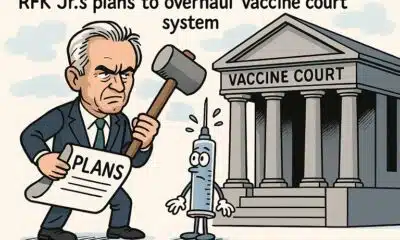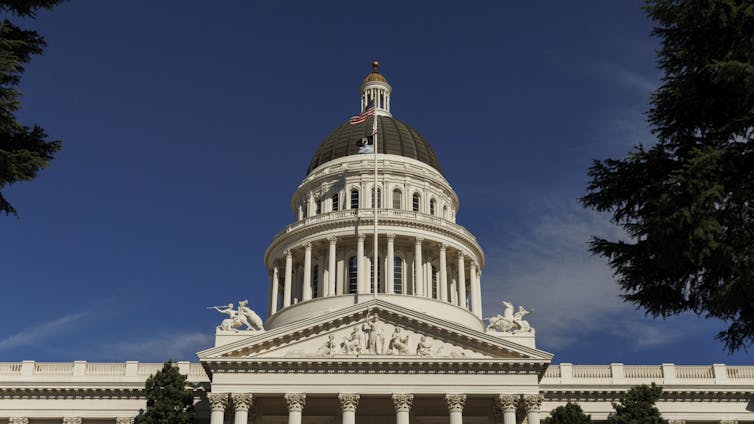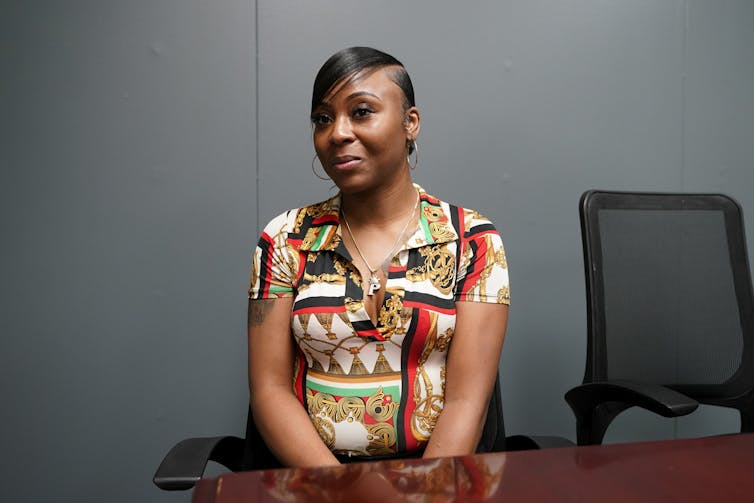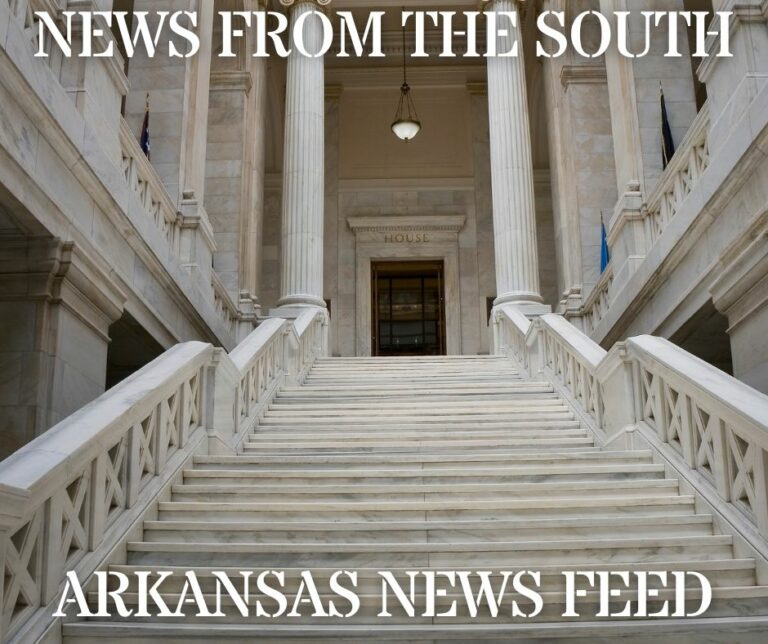
picture alliance/Contributer via Getty Images
Christine Picard, Indiana University and Hector Rosche-Flores, Indiana University
Insects are becoming increasingly popular to grow on farms as feed for other animals, pet food and potentially as food for people. The process of bringing a wild animal into an artificial environment, known as domestication, comes with unique challenges. Luckily, there are important lessons to be learned from all the other animals people have domesticated over millennia.
As researchers who study how domesticating animals changes their genes, we believe that recognizing the vulnerabilities that come with domestication is important. Today’s powerful biotechnology tools can help researchers anticipate and head off issues early on.
Domestication is nothing new
From grain domestication starting as far back as 12,000 years ago to today’s high-tech, genome-based breeding strategies, humans have long bent nature to suit their purposes. By selectively breeding individual plants or animals that have desirable traits – be it appearance, size or behavior – humans have domesticated a whole host of species.
The same principle underlies all domestication attempts, from dogs to crops. A breeder identifies an individual with a desired trait – whether that’s a dog’s talent for tracking or a plant’s ability to withstand pests. Then they breed it to confirm that the desired trait can be passed down to offspring. If it works, the breeder can grow lots of descendants in a lineage with the genomic advantage.
People have made crops resilient to disease and environmental challenges, docile cows that yield more milk or meat, large-breasted poultry and cute dogs.
A long history of insects working for people
Insect domestication is also far from new. People have reared silkworms (Bombyx mori) to produce silk for over 5,000 years. But selective breeding and isolation from wild relatives have led to their inability to fly, dependence on one food source and need for assistance to reproduce. As a result, silkworms are wholly reliant on humans for survival, and the original species doesn’t exist anymore.
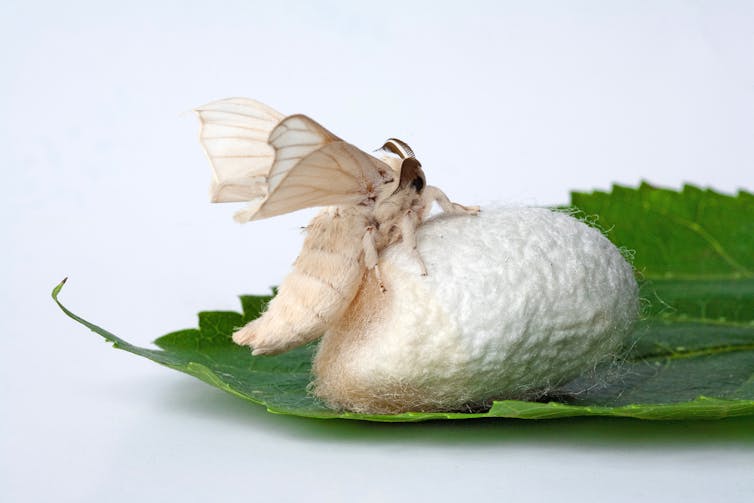
baobao ou/Moment Open via Getty Images
Similarly, people have maintained colonies of the western honeybee (Apis mellifera) for pollination and honey production for centuries. But bees are at risk due to colony collapse disorder, a phenomenon where worker bees disappear from seemingly healthy hives. The causes of colony collapse disorder are unknown; researchers are investigating disease and pesticides as possible factors.
Now the insect agriculture industry has set its sights on domesticating some other insects as a source of sustainably farmed protein for other animals or people.
Insects such as the black soldier fly (Hermetia illucens) and the mealworm (Tenebrio molitor) can grow on existing organic waste streams. Rearing them on organic farm and food waste circularizes the agricultural system and reduces the environmental footprint of growing proteins.
But these insects will need to be grown at scale. Modern agriculture relies on monocultures of species that allow for uniformity in size and synchronized growth and harvest. Domesticating wild insects will be necessary to turn them into farmed animals.

Christine Picard
Domestication has an immunity downside
Chickens today grow faster and bigger than ever. But factory-farmed animals are genetically very homogeneous. Moreover, people take care of everything for these domesticated animals. They have easy access to food and are given antibiotics and vaccines for their health and safety.
Consequently, industrially-farmed chickens have lost a lot of their immune abilities. Building these strong disease-fighting proteins requires a lot of energy. Since their spotless, controlled environments protect them, those immune genes are just not needed. The energy their bodies would typically use to protect themselves can instead be used to grow bigger.
In the wild, individuals with faulty immune genes would likely be killed by pathogens, quickly wiping these bad genes out from the population. But in a domesticated environment, such individuals can survive and pass on potentially terrible genes.
The H5N1 bird flu provides a recent example of what can go wrong when a homogeneous population of domesticated animals encounters a dangerous pathogen. When disease broke out, the poor immune systems of domesticated chickens cracked under the pressure. The disease can spread quickly through large facilities, and eventually all chickens there must be euthanized.

pidjoe/E+ via Getty Images
Domestication and the risks of monoculture
Weak immune systems aren’t the only reason the bird flu spread like it did.
Domestication often involves growing large numbers of a single species in small concentrated areas, referred to as a monoculture. All the individuals in a monoculture are roughly the same, both physically and in their genes, so they all have the same susceptibilities.
Banana cultivars are one example. Banana plants grown in the early 1900s were all descendants of a single clone, named Gros Michel. But when the deadly Panama disease fungus swept through, the plants had no defenses and the cultivar was decimated.
Banana growers turned to the Cavendish variety, grown in the largest banana farms today. The banana industry remains vulnerable to the same kind of risk that took down Gros Michel. A new fungal strain is on the rise, and scientists are rushing to head off a global Cavendish banana collapse.
Lessons about weaknesses that come with domestication are important to the relatively new industry advancing insects as the future of sustainable protein production and organic waste recycling.
How genomics can help correct course
Modern genomics can give insect agriculture a new approach to quality control. Technological tools can help researchers learn how an organism’s genes relate to its physical traits. With this knowledge, scientists can help organisms undergoing domestication bypass potential downsides of the process.
For instance, scientists combined data from hundreds of different domesticated tomato genomes, as well as their wild counterparts. They discovered something you’ve probably experienced – while selecting for longer shelf life, tomato flavor genes were unintentionally bred out.
A similar approach of screening genomes has allowed scientists to discover the combination of genes that enhances milk production in dairy cows. Farmers can intentionally breed individuals with the right combinations of milk-producing genes while keeping an eye on what other genes the animals have or lack. This process ensures that breeders don’t lose valuable traits, such as robust immune systems or high fertility rates, while selecting for economically valuable traits during domestication.
Insect breeders can take advantage of these genetic tools from the outset. Tracking an animal population’s genetic markers is like monitoring patients’ vital signs in the hospital. Insect breeders can look at genes to assess colony health and the need for interventions. With regular genetic monitoring of the farmed population, if they begin to see individuals with markers for some “bad” genes, they can intervene right away, instead of waiting for a disaster.
Mechanisms to remedy an emerging disaster include bringing in a new brood from the wild or another colony whose genes can refresh the domesticated population’s inbred and homogeneous genome. Additionally, researchers could use gene-editing techniques such as CRISPR-Cas9 to replicate healthy and productive combinations of genes in a whole new generation of domesticated insects.
Genomics-assisted breeding is a supplement to standard practices and not a replacement. It can help breeders see which traits are at risk, which ones are evolving, and where natural reservoirs of genetic diversity might be found. It allows breeders to make more informed decisions, identify genetic problems and be proactive rather than reactive.
By harnessing the power of genomics, the insect agriculture industry can avoid setting itself up for an accidental future collapse while continuing to make inroads on sustainable protein production and circularizing the agricultural ecosystem.
Christine Picard, Professor of Biology, Indiana University and Hector Rosche-Flores, Ph.D. Student in Biology, Indiana University
This article is republished from The Conversation under a Creative Commons license. Read the original article.






